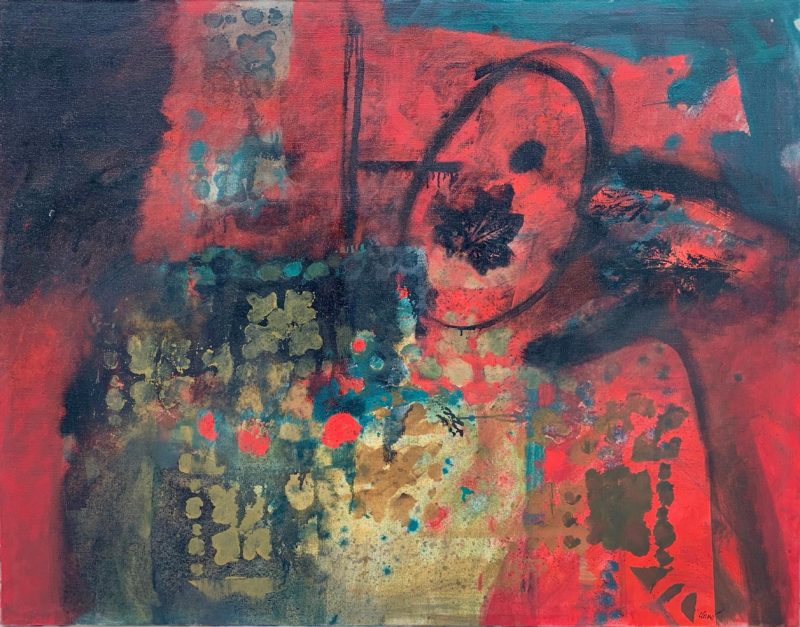Composition feuille rouge
Huile sur toile,1969 - (114x146 cm)
Following the defeat of the republican army in January 1939, Clavé is forced to flee Barcelona. This city has though always remained dear to him. From 1956, he returned from time to time to Barcelona for the exhibitions organised at the Sala Gaspar, but it is only in 1967 that Clavé artistically discovers again the Park Güell, seen as a closed, eccentric and sumptuous world. This will give him the inspiration for a new series of paintings from 1968 to 1969 to which belongs Composition feuille rouge. Understanding the aesthetics of the park means bearing in mind that the Catalan Modernism was then in search of a synthesis between tradition and modernity. Gaudí, considering that paradox, offers a very unique interpretation of the Art nouveau. When the industrialist Eusebi Güell passed away in his house in the Park Güell in 1918, his heirs decided to give the park to the City of Barcelona. In 1926, it opens to the public, as a municipal park. Clavé, a teenager at that time, discovers this amazing site, where nature and architecture are beautifully complementing each other.
The volutes, the floral motifs, the arabesques and the numerous stencils gradually became part of the compositions between 1968-1969 which are paying tribute to Gaudi, among which is Composition feuille rouge. The architectural poesy specific to Catalonia is an added source of inspiration for Clavé: the composition is rich, saturated and dynamic. It renews the still life theme, that Clavé has always liked: in Spain before 1939 and upon his arrival in Paris. His influences are evolving through surrealism, postimpressionism, classicism (with the tributes to Zurbaran), and this theme lasts to the point of meeting his primary concerns.

